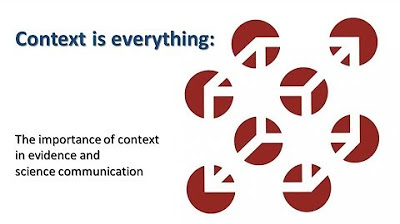How Do Optical Illusions Work?
Summary
TLDRThis video explores the fascinating world of visual illusions and how they trick our brains. It explains how light enters our eyes and is processed by the brain to form images, but our brain takes shortcuts, simplifying what we see. These shortcuts can lead to illusions like the Hering and Mach band illusions, which distort straight lines or shades of gray. The video also covers how illusions like the 'rotating snakes' trick our brain into perceiving motion through patterns of light, dark, and color. In essence, what we see isn't always what we get.
Takeaways
- 🧠 Visual illusions can make straight lines look like they’ve changed size, shade, or direction, but it's actually your brain being tricked.
- 💡 When we see something, light bounces off an object, enters the eye, and is converted into electrical signals that the brain turns into an image.
- ⏱ The process of converting light into an image takes about one-tenth of a second, during which the brain simplifies what we see to help us focus.
- 🌳 These brain shortcuts helped early humans survive by focusing on important things, like avoiding predators or obstacles.
- 📏 The Hering illusion tricks the brain into seeing straight lines as warped when placed in front of a radial pattern because the brain interprets the lines as moving closer.
- ⚫ The Mach Band illusion makes shades of gray appear different even though they’re the same color due to lateral inhibition, a brain process that defines edges.
- 🔲 In the Hermann grid illusion, gray circles appear at the intersections of a grid, even though they aren’t really there.
- 🐍 The rotating snakes illusion creates a false perception of motion due to the sequence of light and dark segments, tricking motion-sensitive neurons.
- 👀 Eye movements and changes in focus can enhance the illusion of motion in images like the rotating snakes.
- 🎨 Visual illusions show that what we see isn't always what we get, as the brain is constantly interpreting and sometimes misinterpreting visual information.
Q & A
What causes visual illusions?
-Visual illusions occur due to the brain taking shortcuts to simplify what we see, which helps us focus on what's important. These shortcuts can trick our perception.
How long does it take for the brain to convert light into an image?
-The process of converting light into an image takes about one-tenth of a second.
Why do our brains take shortcuts when processing visual information?
-Our brains take shortcuts to help us concentrate on what's important, a trait that helped early humans survive by quickly identifying threats or avoiding obstacles.
How does the Herring illusion trick the brain?
-The Herring illusion tricks the brain by making parallel lines appear to be getting closer as they approach the center of a radial pattern, making them look warped.
What is lateral inhibition and how does it contribute to visual illusions?
-Lateral inhibition is an automatic process in our brains that helps define the edges of objects. It contributes to visual illusions like the checker shadow illusion, where gray bars seem to change in shade.
What causes the Herman grid illusion?
-The Herman grid illusion is caused by lateral inhibition, where gray circles seem to appear at the intersection points of each square due to the contrast with the surrounding squares.
How do some visual illusions create the perception of motion?
-Some visual illusions create the perception of motion by tricking motion-sensitive neurons in the brain into responding as they would to real physical motion.
What is the Psychedelic peripheral drift illusion?
-The Psychedelic peripheral drift illusion is an illusion where a still image appears to move, such as the rotating snakes illusion, caused by the pattern of light and dark segments and eye movements.
Why does the motion in the rotating snakes illusion stop when you fixate on a point?
-The motion in the rotating snakes illusion stops when you fixate on a point because the brain's motion-sensitive neurons are no longer being tricked by the sequence of light and dark segments.
How can blinking or shifting your eyes affect visual illusions?
-Blinking, shifting your eyes, or looking away can fuel the illusion of motion in some visual illusions by resetting the brain's perception and allowing the trick to continue.
What is the purpose of the subscribe and like prompts at the end of the script?
-The subscribe and like prompts are there to encourage viewer engagement and support for the Inside Science channel, indicating interest in more content like the video.
Outlines

このセクションは有料ユーザー限定です。 アクセスするには、アップグレードをお願いします。
今すぐアップグレードMindmap

このセクションは有料ユーザー限定です。 アクセスするには、アップグレードをお願いします。
今すぐアップグレードKeywords

このセクションは有料ユーザー限定です。 アクセスするには、アップグレードをお願いします。
今すぐアップグレードHighlights

このセクションは有料ユーザー限定です。 アクセスするには、アップグレードをお願いします。
今すぐアップグレードTranscripts

このセクションは有料ユーザー限定です。 アクセスするには、アップグレードをお願いします。
今すぐアップグレード関連動画をさらに表示

Seeing the world as it isn't | Daniel Simons | TEDxUIUC

The Unbelievable Science of How We Read

Context is everything: The importance of context in evidence and science communication

Psychology of the Senses : Documentary on Sensation and Perception (Full Documentary)

Camera or eye: Which sees better? - Michael Mauser

Optical illusions show how we see | Beau Lotto
5.0 / 5 (0 votes)
